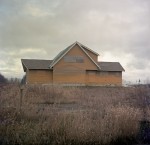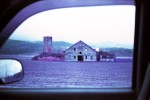Jun
30
2015

The 75mm f4.5 taking lens of the Lubetel 2 is made from only three glass elements know as a Cooke Triplet a design who’s variants date back to 1893. There are limitations to how much distortion this simple lens design can mitigate and it’s evident in the results. I actually consider it a ‘feature’ of this camera that can be exploited to effect. When focusing near to the camera and using a wide aperture the background is thrown into a swirling sea of distortion.

Paradoxically when focused further out and stopped down the camera can produce surprisingly good results.
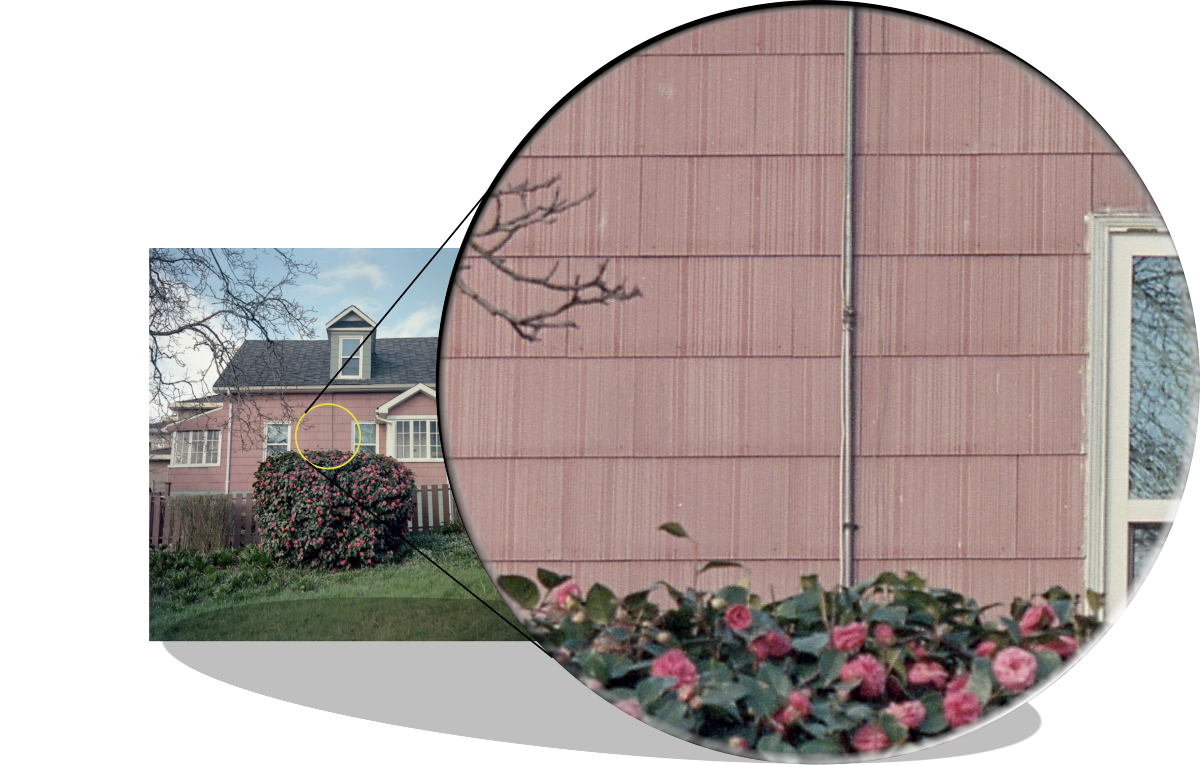
Keeping these characteristics in mind you can use the Lubetel 2 to make images that look like they came from a cheap plastic lensed camera or one with far better optics just don’t forget which is which. Then there is the viewfinder which is more like looking through a cardboard tube than a viewfinder. It’s like one of those sidewalk chalk drawings that have to be viewed from one particular spot anywhere else and it doesn’t look right. The one spot where it does work is frustratingly just slightly out of arms reach unless you have orangutan arms. The shutter release is a tiny little lever that is situated perfectly so that your finger will impede the shutter cocking lever when you go to take the picture. The solution for this is to use a remote shutter cord with your third hand. All problems aside its an interesting looking camera with different textures and materials and my model has ‘MADE IN USSR’ on the side which amuses me.
More about the Lubitel 2 by searching my blog Search Lubitel 2
no comments | posted in Cameras, Photography
Jun
28
2015

Kodak Ektar 100 was introduced in 2008 and shouldn’t be confused with the earlier Ektar that was available from 1989 to 1994. Kodak claims that Ektar is the finest grain colour negative film available and I have no doubt that it is. This is an example of the film shot at its native sensitivity of 100 ISO

While the image itself may not be the sharpest there is very little evidence of the film grain itself.
additionally I have found that Ektar has a great degree of exposure latitude that is it can capture a lot of detail both in image highlights and shadows without the need to sacrifice one or the other. This is a feature of film and it’s non linear exposure curve but especially so for Ektar 100.
With all this in mind ‘Fine Grain’,’great latitude’ and its scanability I thought I would try pushing it to 400 ISO as a test. What this entailed was changing from the default ISO of 100 to 400 on my camera which is the same as under exposing the film by 2 stops. Additionally I pushed the processing (Increased the development time) to account for this. The result is that you have a film that you can use for lower light conditions but what are the trade offs? Well the result is that the grain becomes more pronounced and there is an increase in contrast, additionally I found a loss of detail in the shadows and a colour shift towards magenta

So how does this compare to films with a native sensitivity of 400 such as Kodak Portra and Fuji Superia? Well I would say it doesn’t quite match up it’s more like using out of date Kodak 200. Not all of my testing results matched up because I found it necessary to under expose even a little more under the low light conditions that I had but when exposed properly at 400 ISO it’s a viable alternative in a pinch.
The following examples were taken with the Fujica ST801 and Kodak Ektar at 400ISO with a +2 stop push in development.
no comments | posted in Photography, Processing
Jun
24
2015


In many of my posts I reference and even lament the poor quality of some of the random outdated film I use. I’m a film agnostic, if the film fits I will try it. The results are often unpredictable but one thing I can say is that as film ages the way that it renders the light changes. It isn’t just that it looses some sensitivity it also can lose contrast and have colour shifts and is often far more grainy. Sometimes this can work to create interesting images but sometimes it just doesn’t work. What it does do is look different and that is a good thing. As much as I like beautiful well done digital images at times their homogeneity can be over powering. What’s wrong with a little randomness thrown in?
no comments | posted in Cameras, Photography
Jun
19
2015

I discovered that the roll of Ektar 100 I had in my Contax RTS had not been exposed but had sat ineffectually waiting for the camera to show it the light. Rather than reloading it in the Contax I put it into my Pentax MZ-6 which has not let me down. The result is these random snap shots that I took in the same area. As I’ve probably said many times here on my blog if the images I intend to capture are important to me I turn to Ektar. Ektar scans the best and captures the most detail with the widest exposure latitude. The image on the right is the same as on the left but with -3EV exposure in Lightroom to show how much information is still lurking in the highlights and not actually blown out as might be with a digital camera.
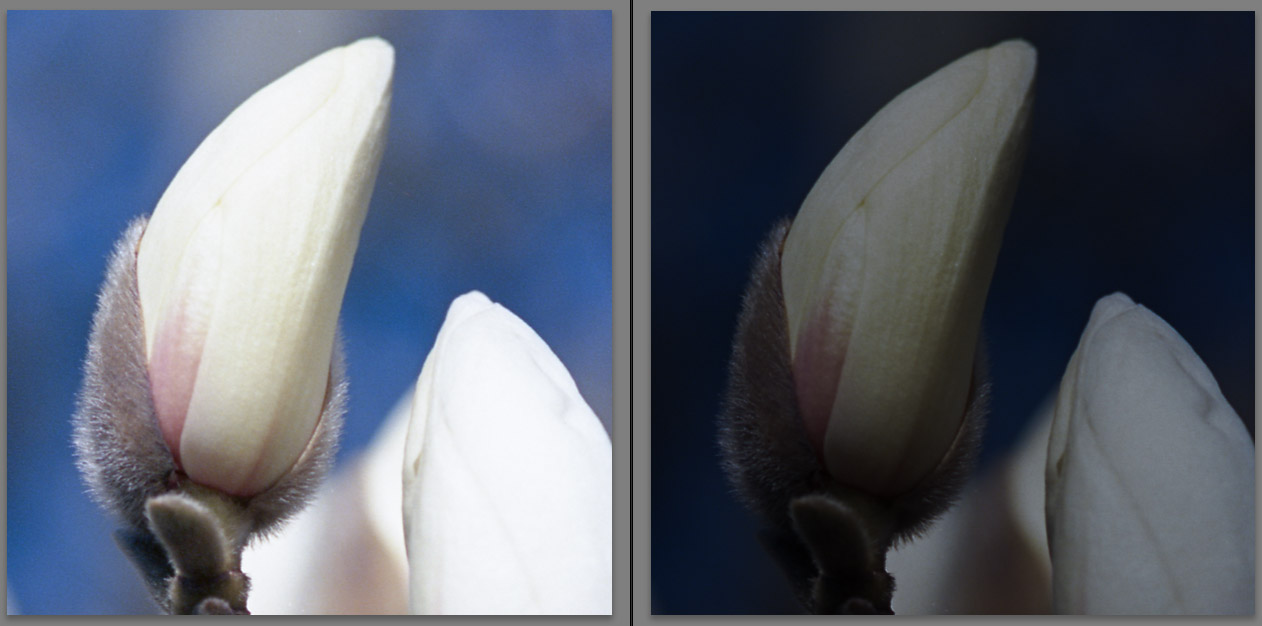
Ektars only short fall is that it is 100 ISO which doesn’t suit every situation, that being said on an upcoming post I will test it pushed to 400 ISO.
no comments | posted in Cameras, Photography
Jun
15
2015

The Pentax Espio 928M has for me a very desirable focal length of 28-90mm which makes it directly comparable to the Canon Z90W which I also have. The Pentax has the slightly slower lens at f4.8-10.9 verses the Canon at f4.5-9.9 either way if you choose to use one of these anachronisms your going to want to use a film of at least ISO400. It should be mentioned that the 928M is not the same camera as the 928 as the lens is slower and it does away with some great features like exposure compensation and multi-exposure mode. So if it were not for the fact that it has a wide angle of 28mm I wouldn’t have even bothered to pick it up. The thing is despite it’s short comings in the end it’s the lens in front of the film that maters and the lens performed quite well actually. Even the corners of the frame are reasonably distortion free when compared to other similar cameras. So with good light and fast film the Espio 928M is almost a camera worth using but really if your still shooting film at this point there are going to be better options. P.S. the Konica Lexio 70 is not one of them trust me.

no comments | tags: film, Pentax, point and shoot | posted in Cameras, Photography
Jun
11
2015

The Vivitar Pocket 35 is a chunky little camera, it’s like someone took a Yashica T3 and squeezed in its sides.
The camera is turned on by sliding the lens cover the same as the Yashica T3 but unfortunately that is about the end of the control you have over the camera. Well aside from the self timer and the shutter button that’s the extent of it. There is no way to alter the ISO or override the flash two of my favourite things. There is a green LED inside the viewfinder presumably to indicate that you have half pressed the shutter button. It’s far too promiscuous to be indicating focus, it will turn on for anything. Vivitar made a lot of cheap cameras over the years so it would be easy to dismiss this as yet another but really its lens sets it apart. Rather than being some fixed focus plastic abomination the lens is a very good 35mm f3.5 Vivitar Series 1 lens. I can’t find much information for the camera but based on the focal length and aperture and outward appearance I believe it’s likely a Tessar lens with 4 elements in 3 groups like you would find on the Yashica T3 and Olympus XA. Interestingly the camera can be powered either by a CR123A battery or 2 AAA I guess that chunky grip is good for two things, It fits the batteries and makes the camera comfortable to hold one handed without fear of dropping it.
There is something very appealing about this little camera. The only thing that keeps it a notch bellow something like the Olympus Stylus Epic is the inability to suppress the flash.
I shot the following images with the Vivitar Pocket 35 and Kodak 400 film.
no comments | posted in Cameras, Photography
Jun
8
2015

I happen to have three lenses that purport to have some sort of macro ability and fit my Pentax Super Program. From left to right are the SMC Pentax-M 1:2.8-4 40-80, Takumar-A 1:3.5-4.5 28-80 and the Vivitar 70-150 1:3.8 Macro Focusing Zoom. For convenience I am going to refer to them as the SMC,Takumar and Vivitar for the rest of the post. Obviously they bring different qualities to the comparison with the SMC being the fastest, the Takumar the widest and the Vivitar the longest but they all claim some close focusing ability.
In the same order here are samples from each of the lenses set to their closest focus and f5.6.

SMC

Takumar

Vivitar
The SMC Pentax-M wins this hands down with the best image quality and the least chromatic distortions. When not at their closest focus and set to 70mm focal length it’s the Vivitar that comes out on top. The Takumar comes last in all the tests but it also has the most ambitious and useful focal lengths. The Vivitar sports an awkward set of focal lengths which might be suited to portraits but it’s not particularly fast at f3.8 It is compact though. The SMC Pentax-M also has a limit range of focal lengths but within them is the best of the bunch and the fastest too. The 28mm wide end makes the Takumar the most versatile but you give up some speed and image quality. So my verdict is that none of these replace each other and I should use them all…the end.
When mounted on an APS-c DSLR such as the Pentax K-3 the Vivitar makes a nice medium telephoto that renders out of focus areas in a gentle buttery bokeh. Wide open at f3.8 it tends to be a bit soft but at f5.6 it does a decent job.



 <
<
no comments | posted in Cameras, Photography
Jun
5
2015

After two rolls of questionable film I finally loaded my Yashica T4 Super with a decent roll of Fuji Superia 400. The results where predictably better than what I achieved with the outdated Kodak 800 Yashica T4 Super. Results that are more in keeping with the cameras abilities. I find the Yashica T4 to be good for all around general picture taking. Partly because of it’s 35mm focal length but also because of its good handling and controls. I shot this roll over a variety of conditions from bright sun to shade and even night time and it performed well in every case.
One of the features of this camera is that it has a lens shield that only slides back when you turn the camera on, the earlier T AF had a similar shield but that only slid out of the way when you took the actual picture. This is a fantastic feature when your shooting in drizzling conditions or outright rain as it helps keep water from getting onto the lens.

One thing about one camera: When you lock focus with a half press of the shutter the meter is also locked so you can use that to manipulate exposure as long as the focus is the same.
no comments | posted in Cameras, Photography
Jun
1
2015
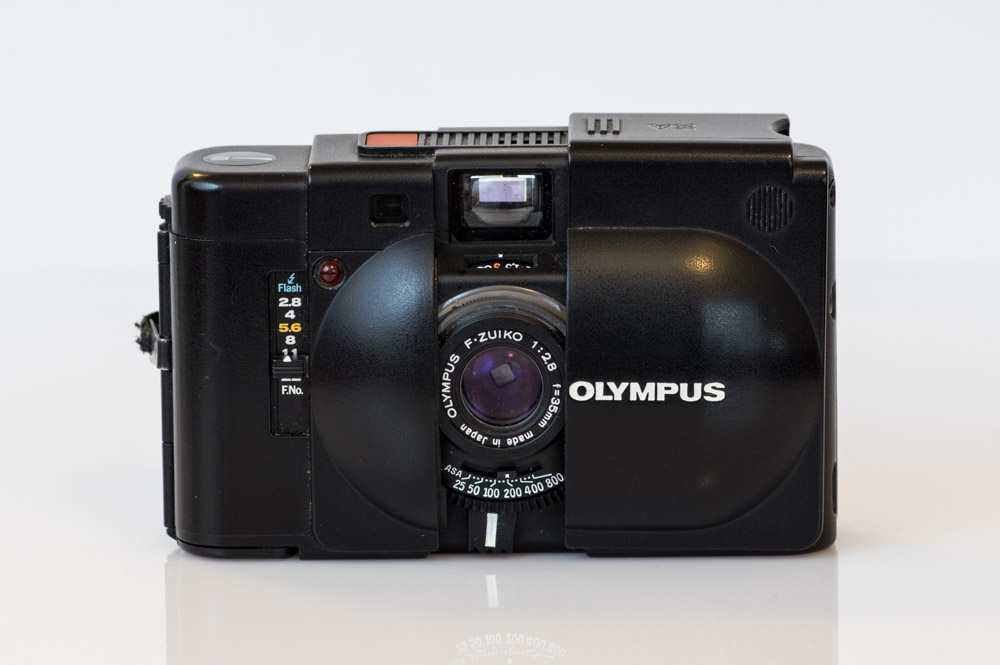
I loaded an Olympus XA with Lomochrome Purple film and set the ASA to 200. The film is rated at 400 ISO but over exposing is supposed to render darker purples. Shooting it during a mostly dreary winter time may have not been the best idea, perhaps spring when everything here is green would be better. I found that not every image caused the same degree of shift. I believe this is a combination of the metering from the XA and that darker greens seemed to be effected less than yellower greens. Also shaded light had much less impact on the shift than direct sunlight.


additionally blue is shifted to green and while you don’t tend to find that much purple out in the real world it is shifted to green as well.
Here is a little chart of how some colours are effected. The original colour is on top with the Lomochrome Purple shifted colour just bellow.

I have another roll that I will shoot when there is more foliage and new growth as well as using a different camera with a little more control.
2 comments | posted in Cameras, Photography, Processing




